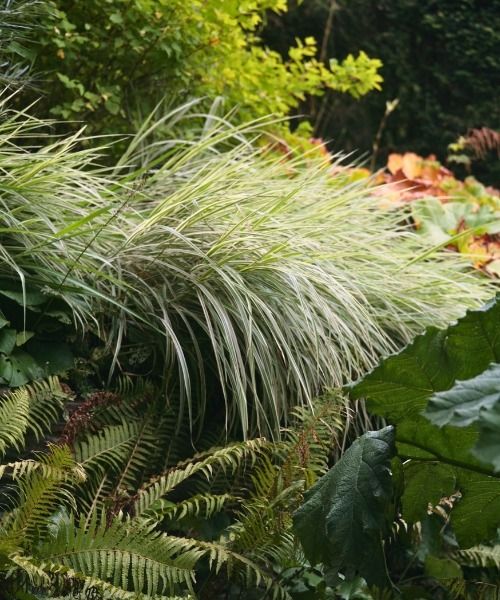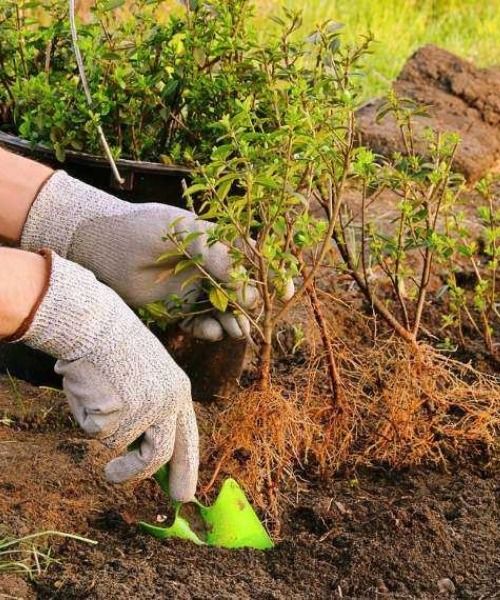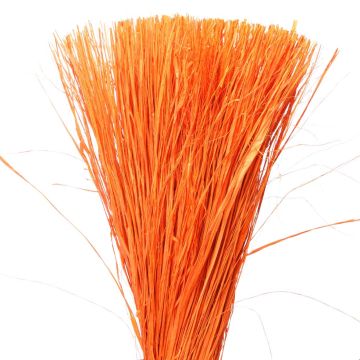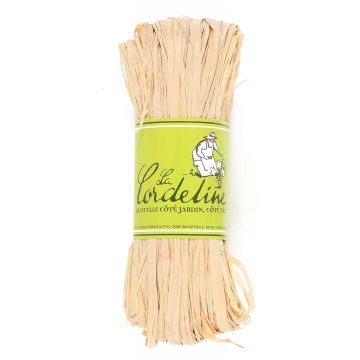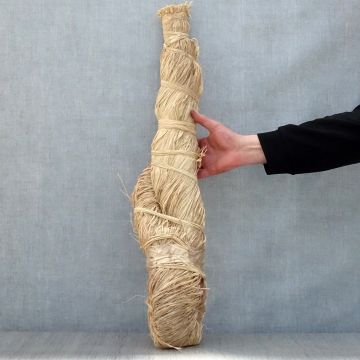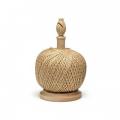Loose raffia
Does this plant fit my garden? Set up your Plantfit profile →
Natural raffia is a long, flexible and resistant plant fibre that has been used by gardeners for a long time to tie plants. Its qualities have made it widely used worldwide as a tie in horticulture, as well as in the making of various everyday objects or art.
The long fibres can be cut with a simple pair of scissors or used as is, depending on the needs. They are used to tie any type of plant to its support, to secure the long stems of a climbing plant, or in the orchard to support a branch loaded with fruits, for example, as it holds firmly without damaging the most delicate stems. It can also be used to protect a graft point or to support a splint installed on a broken branch... In short, raffia is versatile and essential for any gardener.
Haven't found what you were looking for?






























